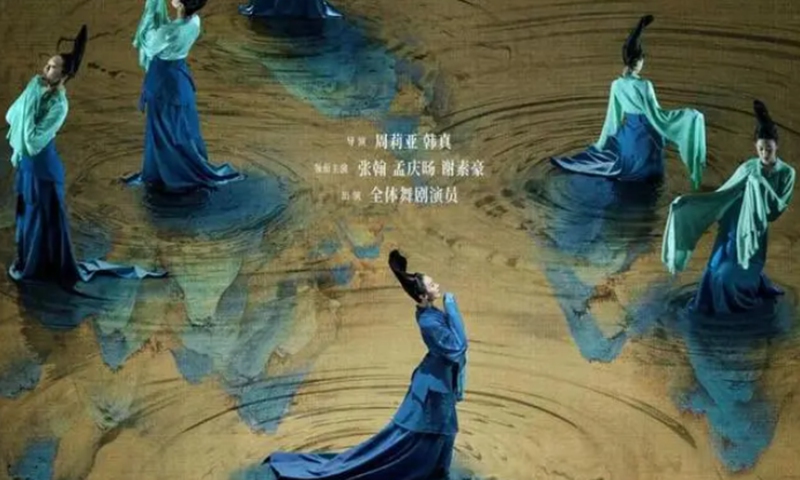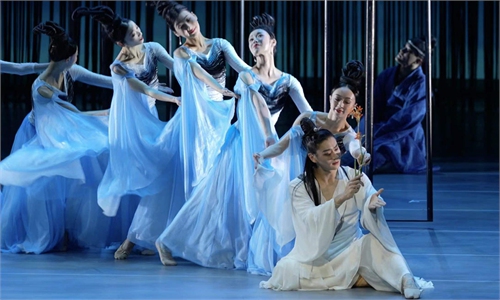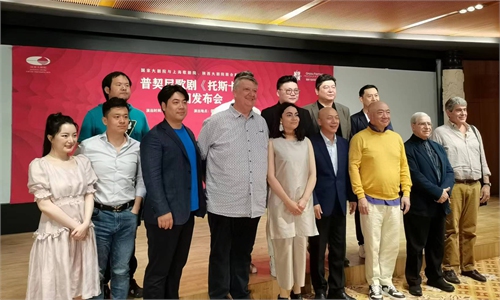ARTS / CULTURE & LEISURE
Stage art provides more source to film works, impressing youngsters

A poster of the film A Tapestry of a Legendary Land
Stage art elements are bringing fresh energy to film works. While stage documentary films are not new to Chinese audiences, the renewed inspiration, fueled by cultural confidence, is attracting more young people to the theatre.
Experts noted that although the box office returns may not be huge, creators should manage expectations and adopt more creative distribution strategies.
A film adaptation of Chinese dance drama A Tapestry of a Legendary Land, brings art from the Song Dynasty (960-1279) to life through dance and music. The film is expected to hit the silver screen on October 1, China's National Day. On Thursday, its world premiere at Peking University attracted young audiences eager to experience the richness of Chinese culture
The film, using dance and music as its medium, showcases the depth of Chinese culture with every frame and movement, recounting the legendary story behind the painting "A Panorama of Rivers and Mountains." After the film is released, an industry observer told the Global Times that the film will provide Chinese audiences with greater access to this cultural masterpiece.
In addition to A Tapestry of a Legendary Land, the Yue Opera Xin Long Men Ke Zhan (New Dragon Gate Inn) was adapted into a stage documentary film and released in late August.
There are also dance drama films such as Red Radio over Shanghai converted into theatres in mid-June, as well as the dance drama film commemorating the literacy struggling during the war times in 1931-45, before the People's Republic of China was founded in 1949.
These stage performance elements are providing new inspiration for Chinese cinema. Stage documentary films are a well-established art form and have long proven effective in attracting new audiences.
Shi Chuan, a professor from Shanghai Theatre Academy, told the Global Times on Sunday that the stage performance documentary has recorded many renowned Chinese artists in the traditional opera, including outstanding Peking Opera artists Mei Lanfang and Gai Jiaotian.
"Cross-media communication is helping drama reach a wider audience. After all the reach in a theatre is limited, while film is way beyond the specific performance location. Take Yue opera, for instance, with subtitles and other special efforts in form of movie, more audience will be able to understand the drama. In this way, movie, as a media, can expand the communication reach through stage documentary film," Shi pointed out.
The Yue Opera version of "The Dream of Red Mansions" garnered widespread international attention, setting new sales records, , Shi said
"The novel and film adapted from the painting A Panorama of Rivers and Mountains" is another example to appreciate the Chinese culture from different aspects and perspectives. So far, we have an awarded novel, a stage drama and now an upcoming movie, Shi noted.
Moreover, Shi said that the players need to answer the question of assessing a film. Shall we assess a film according to its box office or its artistic value? More government departments are willing to fund such works [of A Tapestry of a Legendary Land], so that the culture communication function of films will be beefed up, he said.
The ratio of opera fans among the young people is increasing, Shi said. Some niche markets in Shanghai for Kunqu Opera and Peking Opera are emerging, most of fans are young.
Film distributors must adopt creative strategies to attract niche and scattered young fans, in order to meet market demand.
The author is a reporter with the Global Times. life@globaltimes.com.cn



